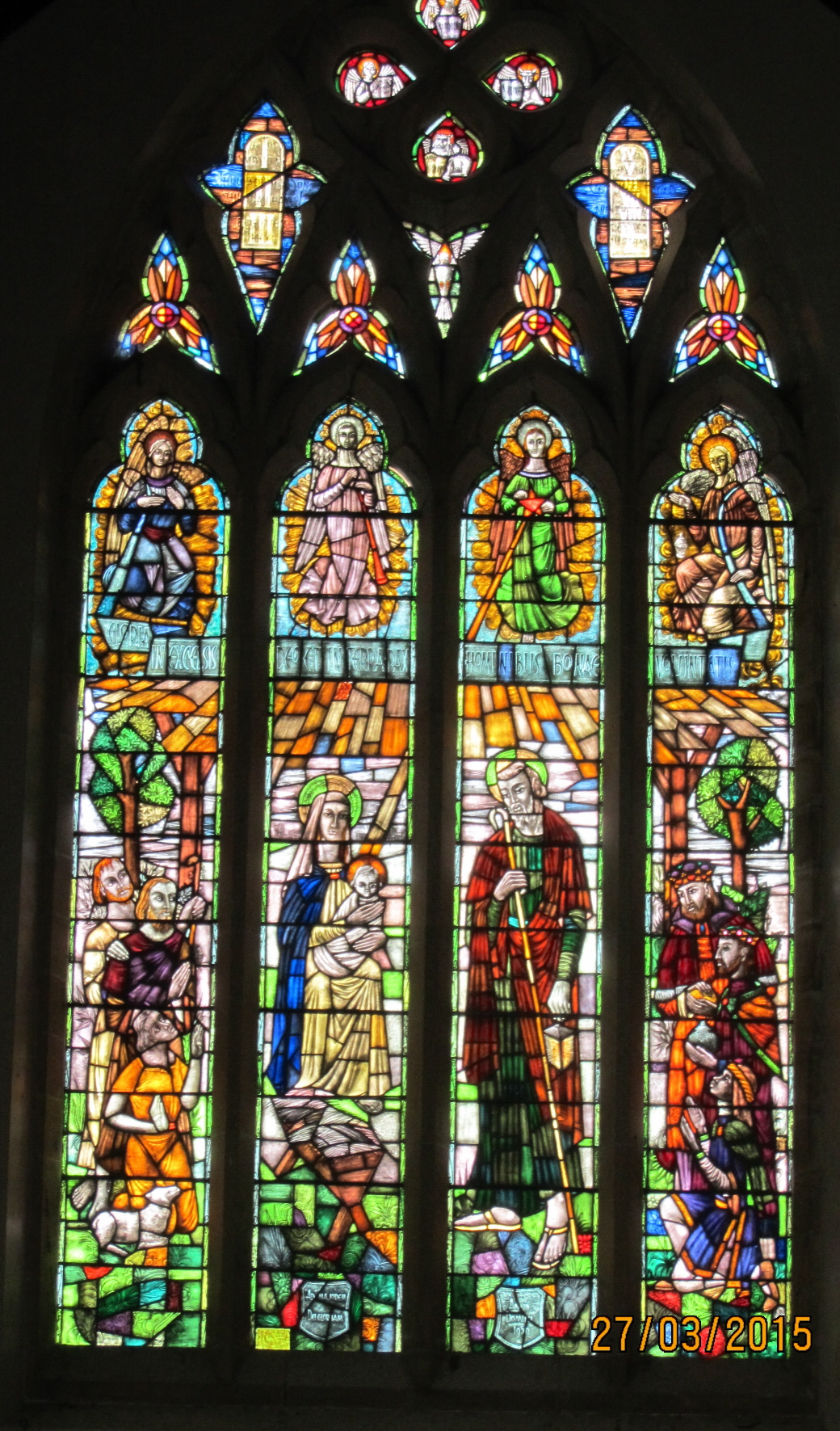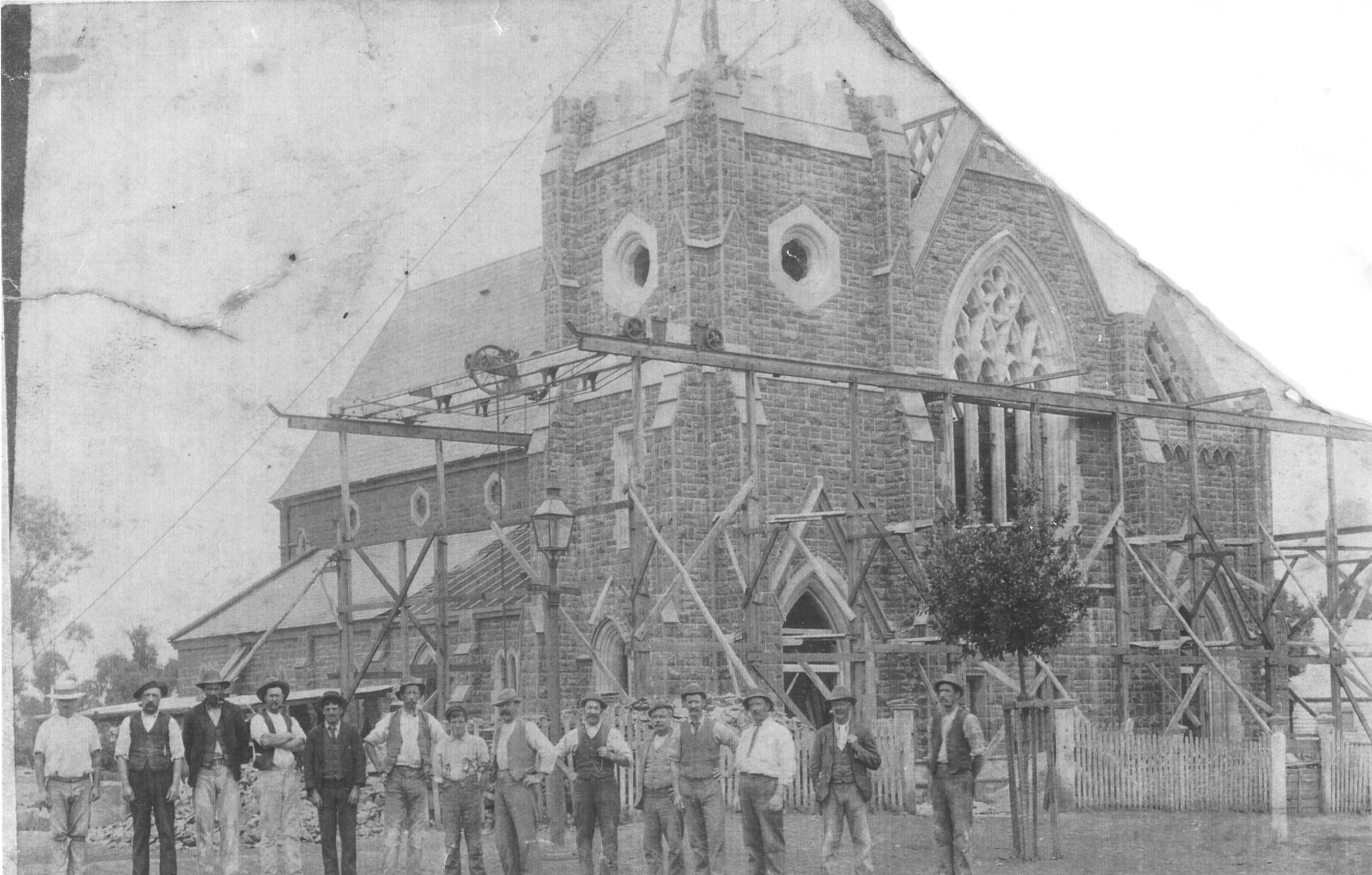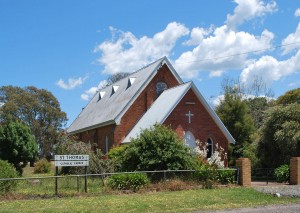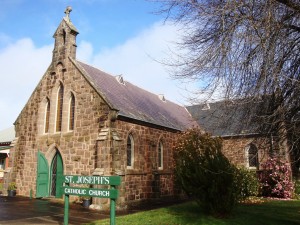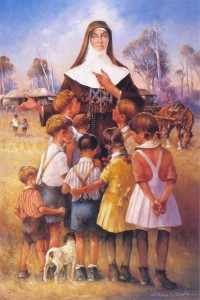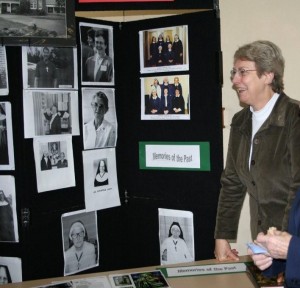[gallery link="file" orderby="rand"]
Newspaper Article – Hamilton Spectator Thursday 22 February 2007
CONDAH’ s St Patrick’s Catholic Church closed its doors on Sunday after 127 years service to the community.
The weatherboard red tin-roofed building was bursting at the seams, as families who once attended every Sunday returned to say goodbye.
Bishop Peter Connors, Fr Pat Mugavin and Fr Paul Gurry officiated a final 10.30am mass. The service ended with a short ceremony outside. The congregation formed a guard of honour, while the clergy led by Bishop Connors officially closed the church.
Lunch was then served under a marquee where families and friends reminisced about the days gone by. The original Condah church was built in 1879 for ₤200 (pounds).
In 1901 it burnt down during the Black Friday fires and was rebuilt the following year in 1902 for ₤400. That same year Condah became attached to the parish of Hamilton.
In recent times the congregation has numbered just give people, thus the decision to close the church had been made. It is yet to be decided what will happen to the money from the sale of the land, building and its contents. Fr Gurry said some suggestions had been offered including the building of a church in East Timor but that the final decision was to be made by the finance committee whose president is Fr Gurry’s brother.
Furniture and other items that had been donated to the church by local families over the years were to be moved to St Mary’s in Hamilton as a remembrance of the Condah church community.
A community that was “par excellence” according to Fr Gurry and, he said, whose members cared for one another, shared joys and sorrows and kept up relationships. The church committee organised the event and the publication of booklets compiling people’s memories of St Patrick’s Church, Condah.
Our Diocesan Community Magazine – March 2007
That Little Wooden Church………
Extreme weather conditions did not deter the one hundred and twenty plus crowd attending the recent closure of Condah’s St Patrick’s Church.
Located just off the Hamilton – Portland Road, the aged church building spilled over with visitors, welcomed back by the local community to celebrate the life of the church. Descendants of Condah’s pioneering families travelled great distances to share wonderful memories of a once thriving congregation, with some members participating in the closing service.
The past few years saw Sunday masses reduced to a handful of devoted worshippers, including the Canavan and Godfrey-Smith families, along with the occasional visitor. Condah’s first church opened in 1879 but fell victim to the devastating Black Friday fires in 1901. The community rallied to rebuild the current church in 1902 at a cost of ₤400 (pounds).
Bishop Peter Connors officiated the closing Mass on Sunday 18 February 2007, along with Fathers Pat Mugavin and Paul Gurry. The occasion had special significance for Fr Gurry whose family were past residents in the district. A book prepared for the day included memoirs from past parishioners. Fr Gurry wrote of happy memories of a country church, including “enunciating Latin with great enthusiasm” during his role as Altar Boy. Others spoke of the warmth and love amongst a community who gathered regularly, united in faith and friendship.
Stories such as …..
The relief of a young parishioner, appreciating the privacy of an enclosed confessional at St Patrick’s compared to kneeling at altar rails in full voice and view of the congregation, as was the case in neighbouring churches. The newly appointed School Teacher generously offered the lend of a cream coloured pony by a local bachelor, enabling travel to weekly mass some four miles from home. She was to marry the owner of that horse in 1949, eventually arriving more sedately some time later on four wheels.
The commitment of the faithful is none more evident than in a farming family who’s Sundays started at 3am to enable timely arrival for 8.45am mass. A four-mile bike ride to church followed five hours of milking cows in the dark and feeding animals. With a member of that same family devoting 17 years to service as an Altar Boy.
So St Patrick’s doors have closed one final time, no longer to be filled with the great characters whose dedication to the life of the church now becomes history.
Anne Slattery
Personal Memoirs of Earlier Times ………….
“Church was an important part of life when staying at Condah, and my memories are of the small church, “our seat” (the Gurry’s) up the front on the left side and especially the care my grandmother took to always prepare the thermos and sandwiches for the priest after Mass. “
“Parishioners names in the 1920’s and 30’s – Black, Bellamy, Clarke, Dwyer, Gray, Gurry, Malseed, Murphy, McKenzie, McDonald, O’Shea, Polack, McCarthy.”
“I can hear Grandma calling from the grave – You should have gone to Mass more often!”
“The best thing about the CondahChurch was that it had its very own confessional box down the back and I didn’t have to kneel at the Altar rails.”
“I can still see Flags Flanagan with his feet at quarter to three, telling us we must take communion in both forms.”
“The Mission Priests were frightening to a young boy – long robes, sandaled feet and booming voices.”
“For our father to travel to Condah by car to see his mother was not possible, as our wartime ration of petrol was four gallons a month.”
“My most ardent prayers were said after Mass, silently asking that Lucy (the horse) would stand until I was safely in the saddle. Riding home was never dull.”
“We believed the priest was God – all dressed up in his heavenly robes. So we behaved accordingly. We were the best behaved children in the Church!”
“Peter – the Lebanese Hawker often stayed at “Raheen” and would say the rosary with us answering in Arabic.” Peter travelled the Western District on horseback for 35 years selling household linen and clothing.
“An Annual event, the Catholic Ball…..for days before, the women baked for the supper. On the night a copper full of boiling milk coffee would top it off. Trays of sausage rolls and cream puffs from the wood-fired oven at home.”
Following are extracts from the Portland Guardian Newspaper 1879 – 1901
15 February 1879
As the Roman Catholic Church at Condah is now all but completed, the consecration will not be long delayed. The building is of wood and substantially built; the roof is of iron, with a quick pitch and as the height to the eaves is at least fourteen feet the ventilation is good.
The Rev J O’Donoghue of Portland has already celebrated Mass in the church. When finished the structure will have cost ₤200 and it is not improbable that in time, a school will be added to the church. At present young children in the neighbourhood have a long distance to travel.
7 April 1879
On Sunday last, March 30th, the Catholic Church at Condah was solemnly opened and blessed by Bishop O’Connor. Accompanied by Fr O’Donoghue, his Lordship proceeded to Condah on Sunday morning from Heywood. He was met on the road out some miles by a large number of resident Catholics. The ceremony of blessing the church commenced 11 o’clock.
Mass was celebrated by Fr O’Donoghue, at the end of which his Lordship taking as his text the words from the Gospel of St John – “He that is of God, heareth the words of God”- preached a very elegant and impressive sermon. He was listened to with the greatest attention, not only by members of his own flock, but by a large number of persons of other denominations who were present, who expressed themselves highly pleased with what they had heard.
There were about 200 persons present, several having come from Portland, Heywood and Branxholme. The Catholics of Condah are to be congratulated on having at length a little Church in which they can assemble to worship God. The church is 40ft long by 20 ft wide, quite large enough for the congregation. When the ceremony was ended a few of the leading gentlemen presented an address to his Lordship, congratulating themselves on the auspicious occasion which brought him amongst them for the first time and alluding to the kind assistance they had received from their Protestant friends – to which his Lordship made a very kind and feeling reply. During his stay at Condah, Dr O’Connor was the guest of Mr McDonald.
Hamilton Spectator 9 February 1901
The Condah Catholic Church building, together with the homes of Mr McDonald and dozens of other residents, were destroyed by fire on the previous day during Black Friday Fires. Newly laid carpet at a cost of ₤30 and a recently acquired communion plate were amongst the items destroyed in the fire.
……………………………………………………………….
